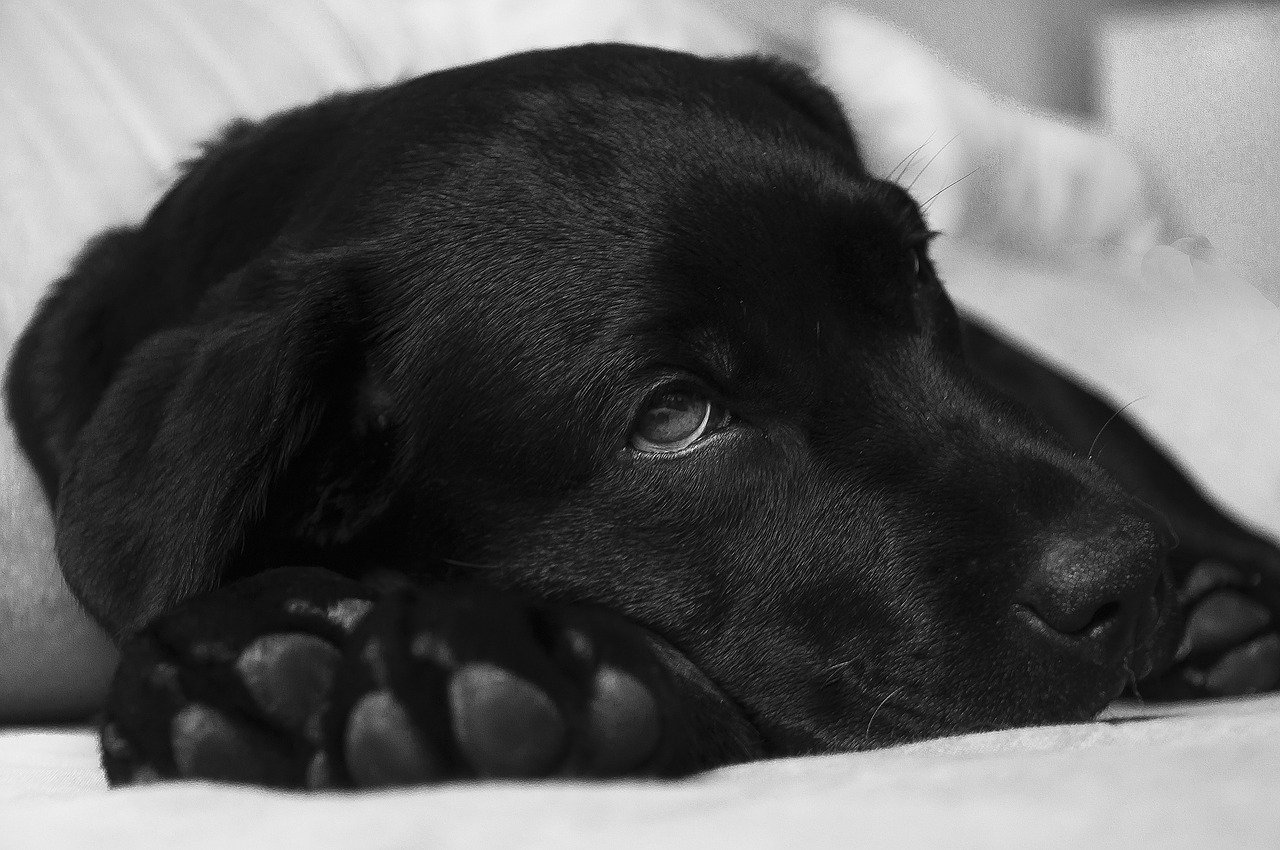A sick dog can cause a great deal of worry; it’s never nice to see your beloved pet in pain or not seeming like their usual happy self. Gundogs in working roles can be prone to injuries too, which can also be extremely worrying for owners. Here, veterinary expert John Houlton answers your dog illness and dog injury questions to help put your mind at ease.
Q: How should I deal with dog injuries caused by barbed wire?
Most barbed wire-related dog injuries occur when they misjudge the height of a fence, or they run into a fence with loose wire. If they trap a leg between two strands, it’s essential to support their weight while freeing them. Throw a coat over the dog’s head while you’re freeing them, as even the most docile dog may try to bite in these circumstances.

Many dog injuries caused by barbed wire do not bleed as much as you might expect, but if blood is spurting from a wound, this indicates arterial bleeding. If this is the case you should:
- Apply direct pressure to the wound and transport your dog to a vet immediately
- Flush the wound with clean drinking water to wash out any debris. If a squeeze-style water bottle is available, the added pressure of the squeeze can help irrigate the area
- Do not clip the adjacent hair as it is likely to fall into the wound, adding to the contamination
- Bandage the wound if it is possible to do so
- Cover it with a sterile non-stick wound dressing if available; alternatively a disposable nappy or clean towel can be used
- Do not apply antiseptic cream or antibacterial sprays to the wound, and use gauze or self-adhesive conforming bandages
Q. Is it true that strenuous exercise after eating can result in a dog with a twisted stomach? How can I reduce this risk?
Twisted stomachs in dogs, or Gastric Dilatation-Volvulus (GDV) to give them their technical name, can be a symptom of a rapidly progressive life-threatening condition commonly associated with dogs eating large meals.

How Does A Twisted Stomach Occur in Dogs?
When dogs consume too much food, their stomach dilates because food and gas is unable to escape. As a result, their stomach may reach such a size that it rotates in the abdomen. The twisting caused by the rotation may block the blood supply to the spleen and stomach, causing the dog to go into shock and sadly die.
The risk factors for GDV or twisted stomach are not completely understood, but some dogs are more likely to experience this than others, including:
- Dogs that have a deep chest
- Dogs that are fed a single meal each day
- Dogs related to others that have had GDV previously
- Setters and flatcoated retrievers are believed to be among the gundogs most at risk
How To Reduce The Risk Of A Twisted Stomach
To prevent your dog developing a twisted stomach, it’s advisable to split the daily feed into two portions and avoid feeding them a large meal within 2-3 hours of working or exercising. When spending time outdoors for exercise, make sure your dog does not gorge itself on spilt grain or livestock feed pellets.
If your dog is of a breed that’s thought to be at increased risk of GDV, or is related to others that have had this condition, talk to your vet about prophylactic gastropexy. This procedure can often be carried out at the same time as spaying, and involves permanently fixing the stomach wall to the abdominal wall, thereby preventing rotation. This surgery can be performed using minimally invasive techniques, such as laparoscopy.
Q. What Do Hip Scoring And Elbow Scoring Involve?
The elbow and hip scoring schemes are organised by the British Veterinary Association in conjunction with the Kennel Club, and are known as the BVA/KC hip and elbow dysplasia schemes respectively.

Hip scoring is designed to determine how likely it is that a dog will go on to develop hip dysplasia, with the elbow scoring scheme doing the same with regard to elbow dysplasia.
How Do Elbow And Hip Scoring Work?
Under the elbow and hip scoring programme, all dogs must have permanent identification in the form of a microchip or tattoo, and the number must be checked by the veterinarian and shown on the radiograph. KC registered dogs must also have their KC registration number on the radiograph.
Once a certificate of hip/elbow scoring has been issued, the dog may not be resubmitted for scoring under the schemes, but there is an appeal procedure if you believe the radiograph(s) were scored unfairly.
What Do My Dog’s Elbow/Hip Scores Mean?
Hip scores are expressed as a total score for both hips with a range of 0-102; the lower the score, the better the condition of the hips. The BVA publish 5-year and 15-year breed median scores (BMS), along with rolling 5-year medians, and advise using breeding stock with values below the latter. The median is the figure at which an equal number of dogs have higher and lower scores, therefore representing the middle of the population.
In contrast, elbows are scored from 0-3, with the figure representing the score of the worst elbow. To minimise the chance of developing elbow dysplasia, only dogs with a score of 0 should be bred from.
Further details of the schemes can be found on the BVA’s website. Find out more about hip scoring and elbow scoring.
Q. What symptoms should I look out for and what should I do if I think my dog ate rat poison?
Most shoots use second-generation coumarins as a form of rat poison. If dogs ingest rat poison, coumarins inhibit the enzymes responsible for the recycling of vitamin K, reducing the production of certain blood clotting factors, which can cause a dog to bleed to death.

This is because the poison has no effect on clotting factors already circulating in the bloodstream, meaning there’s often a delay between poisoning and clinical signs. Second-generation coumarins can be toxic with a single dose.
What Are The Signs Of Rat Poison In Dogs?
If your dog has ingested rat poison, the most common cause of death is bleeding into the chest, but you may also notice the following symptoms:
- Lethargy or weakness
- Lack of appetite
- Blood in the urine or faeces
- Difficulty breathing
- Bleeding from the nose or gums
- Bruising of the skin
- Pale gums
What Should I Do If My Dog Ate Rat Poison?
If your dog is seen or suspected of consuming rat poison or a dead rat, vomiting should be induced immediately. Feed them a few crystals of washing soda (NOT caustic soda), as this should induce vomiting after a few minutes.
Regardless of whether your dog has vomited, take them to a vet immediately to begin further treatment. Oral vitamin K1 is the specific antidote if a dog has eaten rat position and should be continued for 1-4 weeks depending on the toxin ingested.
Remember, treatment that is started immediately after ingestion is less difficult and has a much better prognosis than if treatment is delayed until signs of poisoning appear. If you believe your dog has eaten rat poison, always react immediately.
Preventing Dog Illness And Injury
As a gundog owner, it’s natural to want to do all you can to protect your animal from dog diseases and injuries. Sometimes, there’s nothing you can do yourself and you’ll need to turn to your vet for their expertise and recommendations.
But if you’re wondering about which dog vaccines could help your dog, or you’re worried about common dog diseases or tick bites, check out our health hub for more information. And if it does come to putting your dog to sleep, we’ve got advice on how to navigate that process too.
If you have any questions about any of the queries discussed above, please contact us here.
John Houlton is a vastly experienced veterinarian. He has been published extensively and has co-edited five textbooks. He is passionate about gundogs and working labradors in particular, picking-up regularly throughout the shooting season.